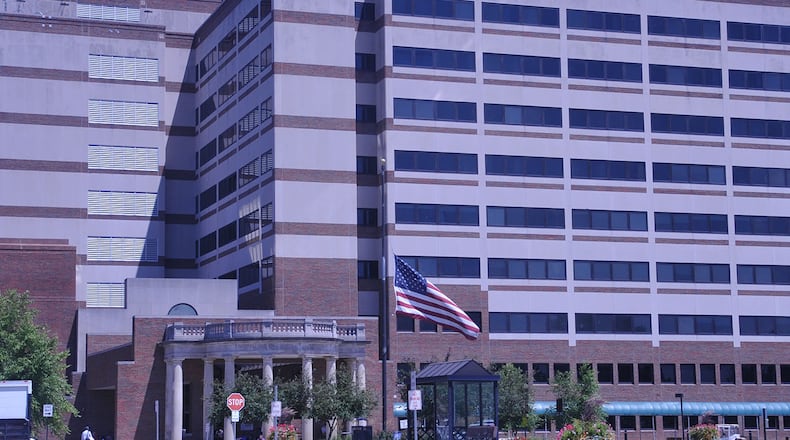The report showed that 20 percent of prescriptions from the Dayton VA were for opioids in 2012, compared to last year when about 11 percent of prescriptions were for opioids.
RELATED: New Fisher House will give veteran families place to stay during care
As the opioid overdose crisis continues to devastate the U.S. — fueling a record 560 drug overdose deaths in Montgomery County last year — the U.S. Department of Veterans Affairs has dramatically cut back on prescribing the painkillers.
The federal department’s opioid reduction initiative launched in 2012 and since then the VA’s overall prescribing rate dropped by 41 percent, according to newly released data that shows the opioid dispensing rate at each VA hospital.
By using alternatives like physical therapy, the VA is seeking to decrease the likelihood that veterans might become addicted to the powerful prescriptions, which is a risk factor of long-term opioid pain therapy.
“This isn’t something just happening at the VA, it’s happening across health care nationwide,” said Dr. Anne Venable, primary care physician at the Dayton VA Medical Center.
Overall, 99 percent of VA facilities have decreased prescribing rates since 2012.
Venable said the program is a reaction to the opioid overdose crisis, with four out of five heroin users starting out with prescription opioids.
“Opiates are not as beneficial for pain as we once thought and they are much more risky than we once thought,” she said.
| Opioid prescribing rates | |||
|---|---|---|---|
| The percent of prescriptions that were for opioids decreased at every VA in Ohio. | |||
| Location | 2012 rate | 2017 rate | Percent change |
| Chillicothe VA Medical Center | 22% | 12% | -46% |
| Cincinnati VA Medical Center | 20% | 11% | -44% |
| Louis Stokes Cleveland VA Medical Center | 5% | 3% | -41% |
| Dayton VA Medical Center | 20% | 11% | -44% |
| Chalmers P. Wylie Veterans Outpatient Clinic | 15% | 6% | -60% |
RELATED: Ohio opioid woes one reason drug lawsuits brought to state
About 25 to 40 percent of those on opioids develop an addiction and the veteran population is twice as likely to suffer an accidental overdose.
To reduce the rate, the VA has been doing things like slowly tapering the dosage and while doing that also providing alternatives for pain and medication. Non-opiate pain medication, medical massages, acupuncture, hypnosis, epidural steroids and nerve replacement are all options for pain management.
Venable said there’s not a specific dispensing rate that the VA has been targeting but the guideline is that for non-cancer pain, opioids should not be the first line of treatment.
The prescribing data was released by Veterans Affairs, which posted publicly for the first time its opioid dispensing rate for each VA location in what it described as an effort to be transparent. The prescribing rate information will be updated semi-annually, on Jan. 15 and July 15 of each year.
RELATED: Wright Patt workers to learn today if they will face unpaid furlough
The data shows opioid dispensing rates for each facility and how much those rates have decreased since 2012. The rates range from 3 percent at the Louis Stokes Cleveland VA Medical Center to 20 percent at the Roseburg VA Health Care System in Oregon.
The VA stated that because the needs and conditions of veterans may be different at each facility, the rates of the use of opioids may also be different for that reason, and can’t be directly compared.
About the Author
